"The visuals become the lead singer" say show designers for The Chemical Brothers
Marcus Lyall and Adam Smith have designed live shows for electronic music duo The Chemical Brothers for over 25 years. They tell Dezeen how they turn audio tracks into immersive visual experiences.
"Tom and Ed aren't actually that interested in being prominent on stage so the visuals effectively become the lead singer," said Marcus Lyall, just before Ed Simons and Tom Rowlands, AKA The Chemical Brothers, took to the stage at Alexandra Palace in London last month.
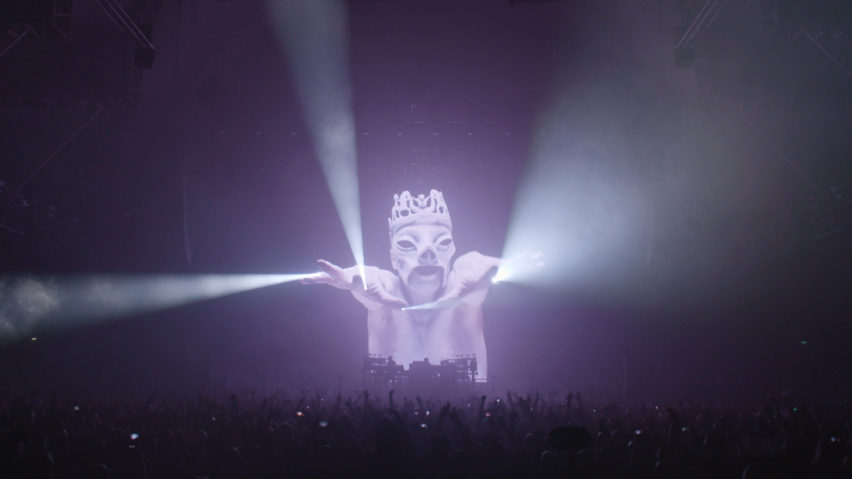
In the live shows, Simons and Rowlands play keyboards, and add samples and filters over a pre-recorded backing track. Meanwhile behind them, a huge screen, measuring 20 metres by eight, acts as the main visual focus for the audience.
The shows, which Adam Smith described as "ridiculously ambitious for a touring festival production," also feature a light show plus physical effects including giant mechanical robots that shoot laser beams from their eyes.
"We try and find a new physical idea and a new lighting moment each year," Smith said.
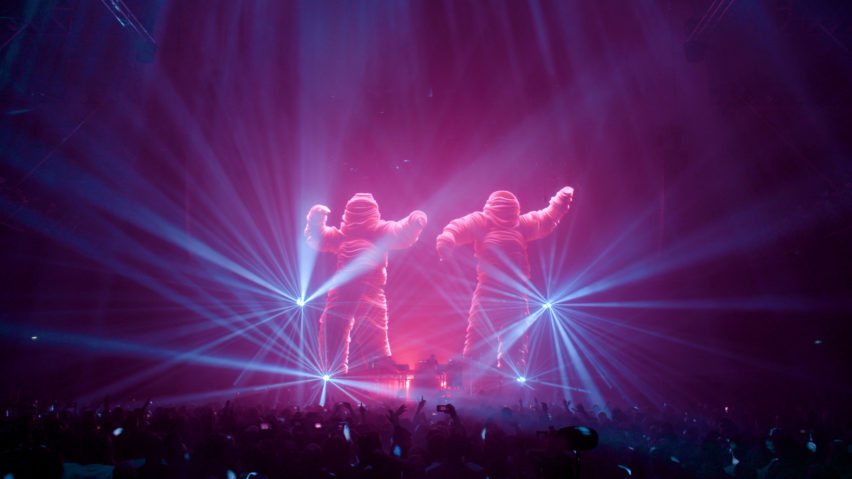
At gigs this year they dropped hundreds of huge, lightweight bouncy balls on the audience from the ceiling and introduced a wall of 70 strobes, to add to the 24 lasers and 50 MegaPointe directional lights.
But Smith and Lyall's on-screen content is what sets Chemical Brothers gigs apart from other bands.
"A lot of [other bands] do stuff that's very motion-graphics heavy, basically because it's cheaper and to be honest probably more profitable," says Lyall.
"The whole thing about this show is that it's mostly film. So that gives it a very different feeling from a lot of shows that are out there."
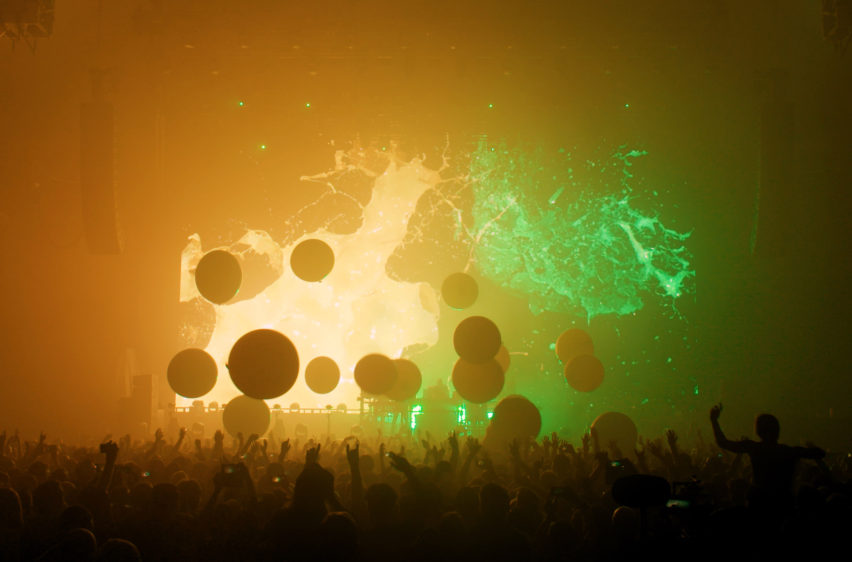
Each track has its own movie created by Lyall, who has a background in graphic design, and Smith, who is a film director. "We want every song to be an entirely different immersive experience for the audience," said Smith.
Most of the films involve real-world action shot with performers, sometimes enhanced with computer graphics and sometimes featuring incredibly ambitious productions. Tracks from the 2010 album Further, for example, featured underwater swimming scenes shot with an aquatic athlete in a tank at Pinewood Studios.
"For Tom and Ed, what goes on the screen is the most visually important factor in the show," Smith said. "So the conversation for design always begins with the biggest screen we can get behind the band. We then work out a lighting design based on how we can augment these visuals."
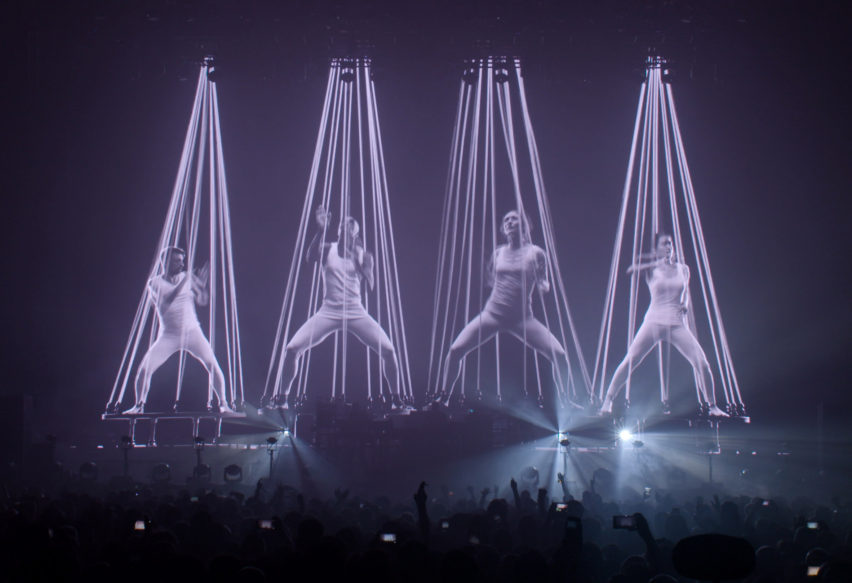
Lyall and Smith first worked in the music industry during the rave scene in the early 90s, when they would produce visuals at warehouse parties. "I trained at Central St Martins doing graphic design and audio-visual studies as it was then," recalls Lyall. "I used to put on parties. That's when Adam and I started working together."
They started creating visuals for bands, working with the likes of U2 and Oasis in their early days, and beginning their collaboration with The Chemical Brothers around the same time.
Formed in Manchester in 1989, The Chemical Brothers have had six number-one albums and two number-one singles in the UK, plus 11 other top-20 tracks. Pioneers of the big-beat sound, their best-known tracks include Push the Button and Hey Boy Hey Girl.
"I have been working with them for over 25 years now, from the days of 16-millimetre projectors to the cutting-edge technology that Marcus and I use today," said Smith.
"Having done it for so long, we're at the point that there's a huge amount of trust," added Lyall. "We present treatments to them and say this is roughly what we're thinking and normally get the thumbs up."
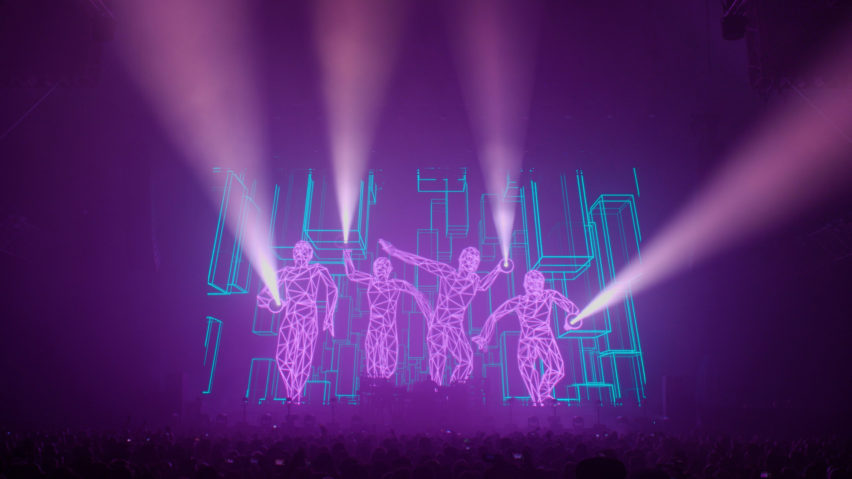
The movies often feature performers lip-synching to the lyrics, reinforcing the conceit that the visuals serve as the lead vocalist for the synth duo.
"The idea for the visuals is always informed by the amazing music that Tom and Ed make," said Smith. "What does the music make me feel? What images does it provoke? What's the story? How do we convey this to an audience?"
Sometimes working together, sometimes working apart, they come up with ideas to present to the musicians in the form of sketches plus found images and clips, which Smith collects obsessively.
"Sometimes it's a few ideas for a song and sometimes its a single idea," said Smith. "We try and create new abstracted worlds that people haven’t seen before."
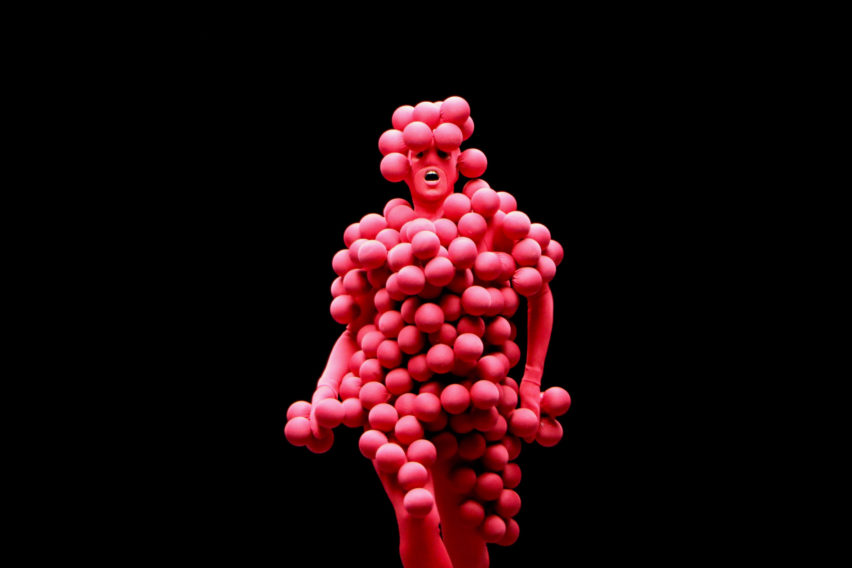
For the track Galvanise, they motion-captured dancer Akram Khan and then added CGI effects over the top, turning him into a dramatically leaping and gesticulating point cloud.
One of their most memorable movies is the one that accompanies Gotta Keep On Makin' Me High. This features catwalk models sashaying and dancing in bizarre red head-to-toe costumes covered in foam spikes, folds and tubes.
"The initial idea came from me strutting up and down the studio and suddenly feeling that this was the soundtrack to an abstracted disco fashion show," said Smith. "That's where it transported me. Marcus and the band liked the idea, so that's what we did."
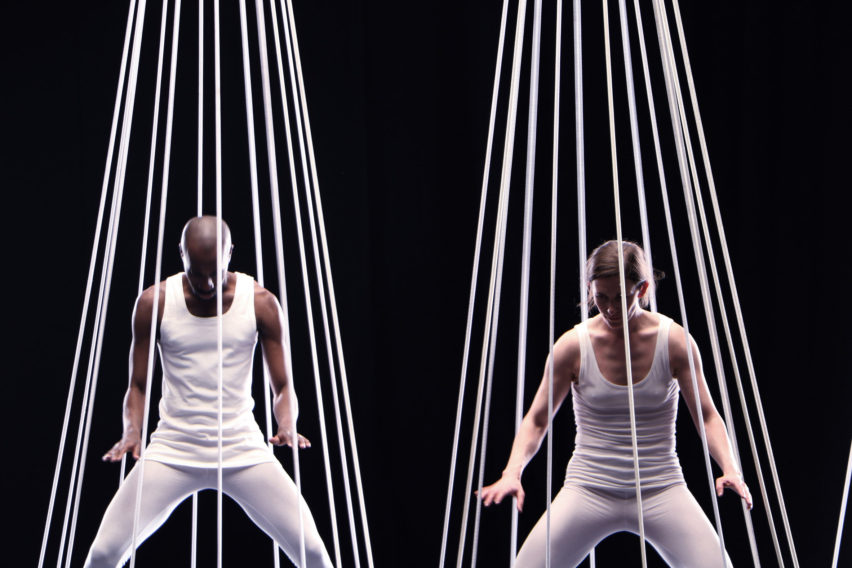
For another track, Free Yourself, the duo choreographed dance scenes with characters wearing boxes over their heads and torsos, or moving within lattices of ropes.
"I found I had subconsciously been collecting a lot of images that all dealt with the theme of repression and release," Smith said. "This felt perfect for the visuals for Free Yourself."
When it comes to linking all the movies together for a live show, Lyall and Smith start by looking at the set list. "We get the set months in advance of the first show so we can actually plan something that's akin to a theatrical experience," said Lyall. He explained that they create new movies for any new tracks in the live playlist.
"Quite often bands will want to change [the set list] almost every night to make it different. What Tom and Ed do is use the same set list but played incredibly differently."
"What it means for us is we can plot a sort of narrative arc through the show and work out where we're going to put visuals, where lights are gonna go, where the laser moments are going to happen, where the physical effects happen and treat it more like a play."
Smith said the design for Free Yourself was based on images that "dealt with the theme of repression and release"
In terms of the stage set, "the actual physical design is relatively simple," Lyall said. "Basically the mandate is put the biggest screen that you can possibly fit at the back of the stage and then work the lights around it."
Each show is punctuated by physical moments that Smith calls "big ideas," such as the four-metre-high robots and the bouncy balls. But "the whole thing about this show is that it's very different from most rock-and-roll shows. It's very much led by the visuals."
The movies are augmented by the light show, which is programmed to sync with the music. "We basically try and articulate every note in the music with lighting,' said Lyall. "You're literally trying to ensure every note that Tom's playing has a corresponding light cue."
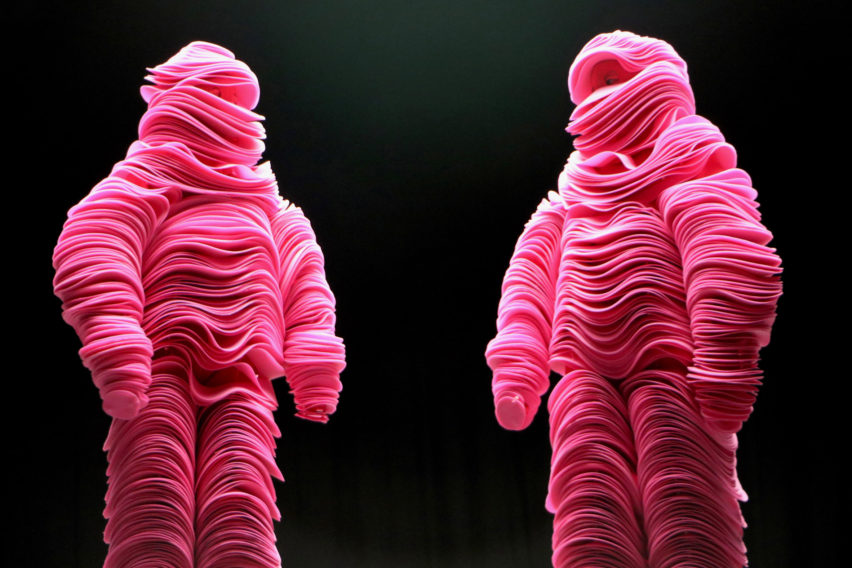
A key challenge is to ensure the show they design can be quickly mounted, de-mounted and loaded on three trucks for the next show. Typically the road crew will have five hours to set up the entire stage from scratch, and three to take it down again.
"The overall design for the show has to be something that is adaptable the various festivals they perform at," said Smith. "This modular design is challenging as the festival constraints don’t allow many of the ideas we come up with. But we push it as far as we can."
Once the design is signed off and the movies are ready, Lyall and Smith will spend a month programming the lighting to sync with the on-screen visuals. To help them do this they build a digital "pre-vis" model of the entire set.
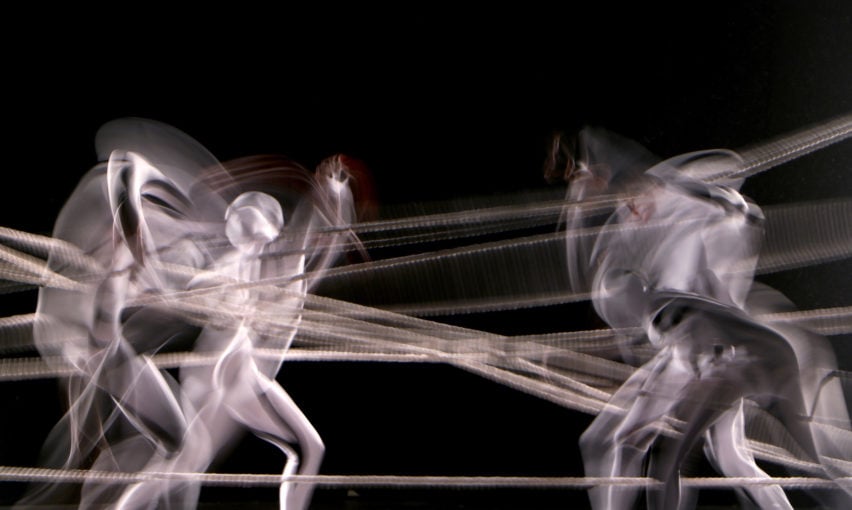
On the road, The Chemical Brothers require a support team of between 20 and 24 people to make each gig run smoothly. These include sound, lighting, rigging, power, lasers, video and production staff.
Although Simons and Rowlands perform to a time code, each set is different, as the duo improvise and try out new ideas. This means the crew have to be alert to changes, manually cueing lights and effects as the show unfolds.
"We rarely stop giving notes and tweaking," said Smith. "There’s always ways to try and improve it."
"You're kind of playing along with the band," added Lyall.